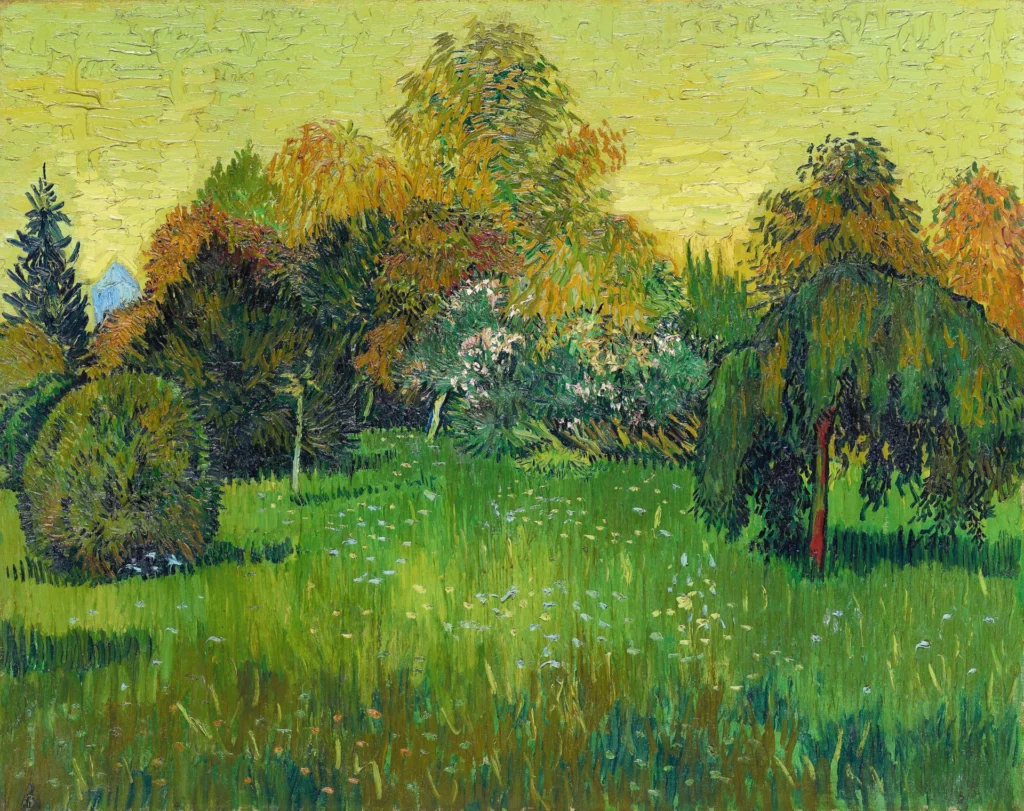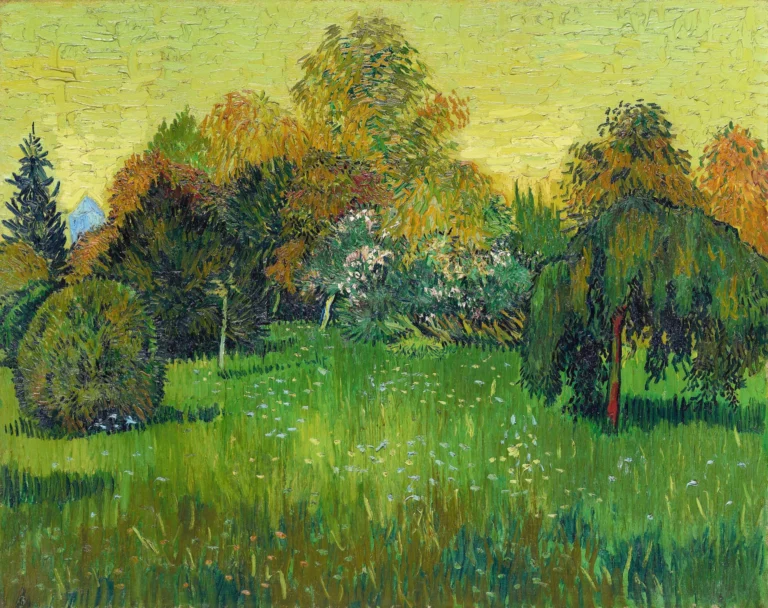The Poet's Garden (1888)
Created in 1888 during his time in Arles, The Poet's Garden is a stunning painting by Vincent van Gogh that captures a municipal park across from his home. This work, meant for Paul Gauguin's bedroom, is a prime example of Van Gogh's post-Impressionist style. With its lush foliage and expressive colors, it reveals Van Gogh's fascination with nature and his use of bold brushstrokes, contributing significantly to the world of modern art.
Year 1888
About the Artwork
The creation of The Poet's Garden represents a deeply personal moment in Vincent van Gogh's life. During his time in Arles, he envisioned a series of paintings to adorn the bedroom of his friend and fellow artist, Paul Gauguin, showcasing the beauty of their immediate environment. The garden depicted symbolizes both a physical space of tranquility and the artistic communion between the two artists. With its vibrant blossoms and dynamic foliage, Van Gogh's emotional investment in the work is evident, reflecting his wish to share the joy of nature's beauty with Gauguin. This piece ultimately underscores the harmonious yet tumultuous period of collaboration and creativity shared by the two artists before it led to their famous fallout.
Did You Know
This painting was created specifically for Paul Gauguin, symbolizing the close yet tumultuous relationship between the two artists during their time in Arles.
In one version of The Poet’s Garden, Van Gogh included a striking blue fir tree, which serves as a central element and reflects the artist’s fascination with nature’s more imposing figures.
The Poet’s Garden is noted for its revolutionary use of color and texture, influencing modern art movements and establishing Van Gogh as a pivotal figure in the post-Impressionist movement.










